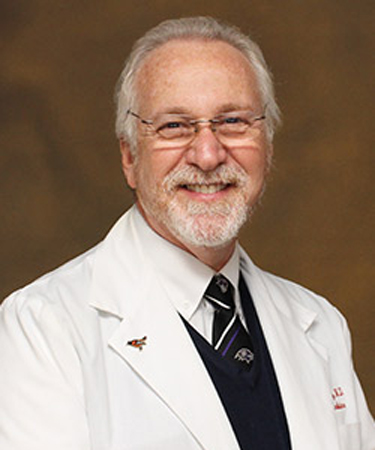Monday June 24, 2019 –
Friday June 28, 2019
8:00am-12:15pm
JUN 24 – 28, 2019
Family Medicine, Pediatrics and Sports Medicine: A Comprehensive Approach to Clinical Problems
Event Details
When
Where
The Westin Sarasota, FL
The Westin, Sarasota, Florida
Event Code
SEMLA-3320190624
Course Topics
Day 1
Routine Adult Care.
Upon completion of this session, the participant should be able to: EBM, GL, COMP
- Determine which screening tests are indicated for particular patients, according to USPSTF guidelines.
- Employ Guideline recommendations presented for common disorders such as HBP, Lipids, STD’s, Cancers-lung, Cx, Breast, etc; AAA, Hep B & C; T2DM, etc., .
- Advise your patients regarding vitamins and supplements as per the USPSTF and Evidence.
- Order appropriate immunizations for adult patients as per the ACIP and CDC Schedules.
More than Skin Deep: Dermatologic Conditions in Athletes.
Upon completion of this session, the participant should be able to: COMP, GL
- Describe how skin conditions impact athletes in ways unique to them, as compared to the general population.
- Diagnose and treat various skin conditions that are especially common in athletes and active individuals as per the NCAA and FSHSA Guidelines.
- Recommend various prevention strategies that may be employed in athletics to stop the spread of some skin conditions.
- Appraise the various “allow participation” and “return-to-play” rules and regulations stipulated by the various sports organizations in the United States, such as the National Federation of High Schools (NFHS) and the National Collegiate Athletics Association (NCAA).
Depression and Anxiety in Primary Care.
Upon completion of this session, the participant should be able to: COMP, GL
- Explain the incidence and prevalence of anxiety and depression.
- Evaluate patients with signs and symptoms of anxiety and depression so as to make an accurate diagnosis as per the APA and DSM-5 Criteria.
- Prescribe appropriate medications and/or behavior modification to treat the various degrees of anxiety and depression as well as bipolar disorder from initiation to continuation and maintenance, when needed
- Identify the suicidal patient and take appropriate actions for their safety as well as the public.
The Evaluation and Treatment of Knee Conditions and Injuries
Upon completion of this session, the participant should be able to: GL, COMP
- Differentiate knee conditions using special tests.
- Identify the anatomical structures of the knee that are pertinent to diagnosing and treating injuries and conditions.
- Describe the signs and symptoms of common knee injuries and conditions.
- Recognize what imaging modalities to use to correctly diagnose and, therefore, manage common injuries and conditions of the knee.
Day 2
Evaluation of Shoulder Pain in Athletes and Athletic Individuals
Upon completion of this session, the participant should be able to: COMP
- Differentiate injuries of the shoulder using special tests.
- Identify the anatomical structures of the shoulder that are pertinent to diagnosing and treating injuries.
- Describe the signs and symptoms of common sports injuries to the shoulder.
- Recognize what imaging modalities to use to correctly diagnose and, therefore, manage common injuries of the shoulder.
Smoking Cessation.
Upon completion of this session, the participant should be able to: EBM, GL, COMP
- Recognize the role of smoking in disease etiology and the Health Consequences as identified in the 2014 Surgeon General and CDC Report.
- Develop methods of how to recognize influence and build confidence in a patients’ ability to quit smoking as per the AHCPR Guidelines.
- Utilize techniques and develop resources to enhance a patients’ ability to stop smoking, such as the NCI and smokefree.gov.
- Recognize the various benefits or advantages, indications and contraindications for use of the various available drugs and devices to assisting your patient in smoking cessation.
Evaluation and Treatment of Neck Pain
Upon completion of this session, the participant should be able to: GL, COMP
- Describe the injuries that can occur in the neck region of athletes and athletic individuals.
- Develop a logical differential diagnosis for any athletic or active individual presenting with neck pain.
- Determine the rationale behind treatment approaches to various neck injuries as per the Cochrane Library Reviews and ACR (Rheumatology).
- Assess and order laboratory and imaging studies to assist in the diagnosis of neck injuries and pathologies as per the ACR Radiology Criteria and Guidelines.
Headache.
Upon completion of this session, the participant should be able to: GL, COMP
- Employ the diagnostic criteria for the common types of headaches seen in primary care as per the HA Classification Subcommittee of the International Headache Society and NHF.
- Be aware of “red flag” symptoms indicating the possibility of a more serious reason for the headache.
- Determine when diagnostic imaging is indicated in patients presenting with headache.
- Select appropriate treatment modalities for patients presenting with headache.
Day 3
Anemia.
Upon completion of this session, the participant should be able to: GL, COMP
- Develop a diagnostic strategy to ascertain the etiology of the anemia.
- Utilize the guidelines for diagnosing anemia in children and adults in terms of available testing.
- Develop a clinical approach to treating various anemias to include Iron Deficiency and “Anemia of Chronic Disease” due to infections, inflammatory dz’s, CKD, Malignancies, Cytokines, Interferons, TNF’s, etc.
- Describe the role of consultants in the evaluation and management of anemia.
Pediatric Immunization Update and Challenges of Vaccine Refusal.
Upon completion of this session, using information published by the CDC and AAP, the participant should be able to:GL, COMP
- Describe the relevant epidemiology of specific vaccine-preventable diseases.
- Appropriately use vaccines according to ACIP and AAP recommendations.
- Incorporate and apply the significant changes and updates to the current ACIP/AAP recommendations
- Approach the problem of vaccine refusal and provide clinical strategies to effect parental education and cooperation.
Food for Thought: Understanding and Working with Eating Disorders.
Upon completion of this session, the participant should be able to: COMP ^
- Identify the behavioral and psychosocial triggers that promote eating disordered behaviors.
- Distinguish between the symptoms of anorexia, bulimia and binge eating behaviors.
- Recognize the clinical “red flags” that indicate eating disordered behavior.
- Apply appropriate interventions designed to treat eating disordered behaviors.
Antibiotic Update.
Upon completion of this session, the participant should be able to: COMP
- Review recent trends in antibiotic resistance.
- Improve empiric antibiotic usage for common pediatric conditions.
- Develop strategies to resist further bacterial resistance, as recommended by the CDC.
Day 4
Tick-Borne Infections: Hot Spots and Bullseyes.
Upon completion of this session, the participant should be able to: GL, COMP
- Analyze the epidemiology of tick-borne infections.
- Recognize the clinical/laboratory manifestations.
- Appropriately prescribe therapy, incorporating recent IDSA guidelines.
Improving Compliance.
Upon completion of this session, the participant should be able to: COMP ^
- Use techniques that can better detect non-compliance in their patients.
- Apply techniques that can be used to increase compliance in their patients.
Acute Otitis Media: Of Pathogens and Patients.
Upon completion of this session, the participant should be able to: GL, COMP
- Recognize trends in resistance in pediatric pathogens.
- Assess recommendations in AAP/AAFP guidelines.
- Appropriately prescribe empiric antibiotic therapy.
Identification and Treatment of Traumatized Patients.
Upon completion of this session, the participant should be able to: COMP ^
- Describe the characteristics associated with traumatic events.
- Interpret the “red flags” or symptomatic manifestations of trauma in patients.
- Demonstrate how to obtain a trauma history from a patient during the H and P.
- Identify and propose interventions designed to treat symptoms of trauma and increase comfort during physical exam.
Day 5
Thyroid Disease.
Upon completion of this session, the participant should be able to: EBM, GL, COMP
- Formulate a plan for the evaluation of a patient with presumed thyroid disease.
- Interpret common lab and imaging tests in the evaluation of a patient with thyroid disease.
- Select appropriate treatment modalities, both medical and surgical, for patients with thyroid disease according to the American Thyroid Association Guidelines.
Chief Complaint: Fever and Rash.
Upon completion of this session, the participant should be able to: COMP
- Recognize distinctive clinical illnesses with fever and rash.
- Develop an approach to clinical and laboratory diagnosis.
Obesity.
Upon completion of this session, the participant should be able to: EBM, GL, COMP
- State the epidemiology of obesity in America and the health risks associated with obesity.
- Assess patients who are obese and determine that they are in need of treatment.
- Recommend and utilize the ACC/AHA/TOS Guidelines for the Management of Overweight and Obese Adults with options available, including diet, exercise, medications, and bariatric surgery.
- Employ the Endocrinology Society Guidelines on Pharmacological Management of Obesity.
Virus X: Ubiquitous, Uncanny, Understandable.
Upon completion of this session, the participant should be able to: COMP
- Recognize the diverse clinical manifestations of EBV infection.
- Order appropriate laboratory work-up based on the situation.
- Anticipate natural history and complications of infection.
Learning Objectives
Things to Do
Sarasota, Florida
Sarasota offers a truly impressive blend of shopping, cuisine, and attractions. So sail into a breathtaking sunset, golf on lush green fairways, explore St. Armands Circle, or just relax and sink your toes into some of the finest sand in the world.
White sand beaches
21 Zagat-rated restaurants
MLB spring training
Museums, theaters, and festivals
Dozens of golf courses
Presented By

Stephen Eppes, MD, FAAP
Professor of Pediatrics, Sidney Kimmel Medical College at Thomas Jefferson University; Vice Chair, Department of Pediatrics and Director, Pediatric Infectious Diseases, Christiana Care Health System; Wilmington, DE

Lisa Ferentz
Founder and President, The Ferentz Institute; Clinical Social Worker, Private Practice and Clinical Social Work Consultant, Baltimore, MD

Kevin Ferentz
Clinical Associate Professor, Department of Family and Community Medicine; Lead Physician, GBMC Primary Care, Owings Mills, MD

George Pujalte
Assistant Professor; Senior Associate Consultant, Sports Medicine, Mayo Clinic, Jacksonville, FL
Accreditation
Cancellation & Refund Policy
We understand that plans may change. Please review our cancellation and transfer options below:
30+ Days Before Conference Start Date
- Refund: Full refund minus a $50 processing fee.
- Transfer: Registrations can be transferred once, at no cost, to another conference within two years. Alternatively, registration may be placed “on hold” for up to 12 months, allowing participants to choose a suitable conference for transfer within that period.
Less Than 30 Days Before Conference Start Date
- Refund: No refunds available.
- Transfer: Registration may be transferred to another conference within 2 years at no cost. Alternatively, registration may be placed “on hold” for up to 12 months, allowing participants to choose a suitable conference for transfer within that period.
Additional Notes
- No-shows are non-refundable and non-transferable.
- If we cancel a conference, you may choose a full refund or transfer to another event.
On-Demand Courses
- All sales are final. No refunds or transfers.
Invitation Letters
If American Medical Seminars issued you an Invitation Letter to attend a CME conference in the United States and you need to cancel your registration, we will only refund 50% your registration fee. This is to cover the cost of your Invitation Letter and processing costs. By registering, you agree to the non refundable portion of the registration.
Disclaimer
In the event that AMS is required to cancel a live conference, registrants will receive a full refund within 7 business days. AMS is not responsible for charges associated with cancelled flights or hotel rooms.
How to Request a Cancellation or Transfer
Requests must be submitted in writing to mail@ams4cme.com or by calling 1-800-267-4263.
Note: By registering, you agree to this policy.


